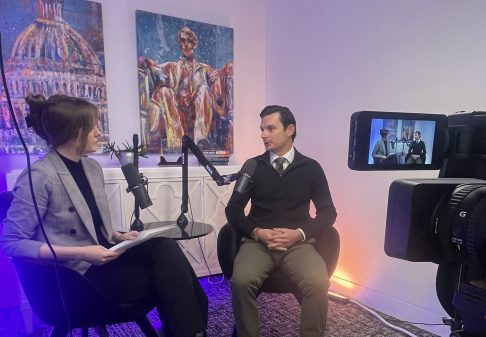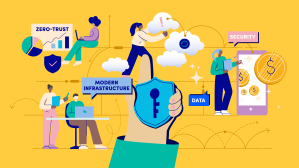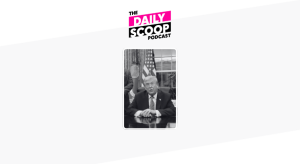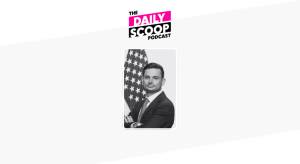- Sponsored
- Insights
The modern battlefield demands modern talent management systems

In today’s rapidly evolving workplace, the U.S. Department of Defense (DoD) faces an increasingly complex challenge: attracting and training the personnel required to meet multiple missions across the globe and our national security objectives. DoD leaders not only must master complex logistical and military strategies; they also need more adaptive tools to build and sustain an agile and empowered workforce to accomplish those strategies.
As I meet with government and defense leaders, I continue to encounter a central underlying question: Are we equipped to manage the talent demands faced by DoD and federal agencies in general? It’s no secret that U.S. agencies are hobbled by outdated, cumbersome workforce management systems and processes that have failed to keep up with the realities of today’s multi-generation workforce. Less obvious, however, is the combination of technical debt and talent shortages faced by federal agencies and the extent to which they hinder the public sector’s ability to adapt, innovate, and ultimately, deliver on agency missions.
Outdated systems stifle potential
For far too long, many government agencies have been operating on shared or independent legacy human resource (HR) systems that cannot keep pace with the demands of today’s digital world. These outdated, monolithic systems often exist in fragmented silos. They can’t always connect with systems at related agencies. This patchwork approach hinders interagency collaboration, wastes resources and limits an agency’s capacity to understand the full scope of its workforce capabilities. It also creates roadblocks to efficiently sharing information, analyzing government-wide trends, or standardizing best practices.
The lack of standardization and the inability to aggregate critical HR data across government is also handicapping the ability of agency leaders to find and cultivate the skills they need and deploy them where and when they’re needed. Antiquated infrastructure and processes continue to hinder the development and deployment of integrated, shared service solutions and limit the ability to leverage talent across government effectively.
In contrast, modern, adaptive, cloud-based solutions offer real-time data and analytics that empower agency leaders to make informed, strategic decisions faster. Those solutions are increasingly augmented with AI-powered analytics that can reveal hidden insights into workforce trends, skills gaps, and performance metrics that would have otherwise remained unseen.
For example, at Workday, we have seen how collaborative tools and insights can help agencies create comprehensive strategic workforce plans and compare workforce capacity to talent availability. Leaders can make better decisions about critical processes, including hiring, reskilling, and upskilling. This isn’t just about efficiency; it’s about ensuring agencies have the right talent in the right place at the right time, ready to meet current and future challenges.
Moving beyond resumes to skills
Another significant shift taking place in today’s enterprises is the need to identify, nurture and deploy talent more strategically. Traditional hiring practices — focused primarily on credentials and outdated job descriptions — exacerbate the talent and skills gaps agencies increasingly face in today’s competitive labor environment. Agency leaders recognize they must adopt a skills-based approach to their workforce deployment that prioritizes the relevant competencies and capabilities required to achieve project and mission objectives.
It’s clear that when it comes to matching talent to the task, it’s not about “what you were or what you’ve done but what you can do.” That’s why we need to leverage advanced technology like AI to assess talent strategically.
We’ve seen first-hand how AI-powered talent marketplaces can help match employees with opportunities based on their specific skills, language proficiencies, certifications, and current availability. This allows our enterprise customers to optimize team performance and drive project and mission success. We can also identify and proactively address skills gaps through targeted training and professional development opportunities.
For instance, the Defense Intelligence Agency (DIA) has selected Workday Government Cloud to optimize talent, reduce time-to-hire, and proactively manage career paths. This ability to integrate and direct the full scope of skills across the organization will reduce time-to-hire to under 180 days, enhance workforce retention, deliver new e-learning opportunities to upskill personnel and match individuals to projects more effectively, based on skills, language proficiency, certifications, location and availability.
A modern, AI-powered workforce management platform can make a measurable difference in streamlining hiring processes, accelerating onboarding, and promoting employee development by automating business and training processes. Workday’s solution also helps agencies retain and develop their workforce with a centralized platform that empowers employees to learn new skills and envision new opportunities to map out their career journeys.
By leveraging integrated analytics, leaders can gain greater visibility into critical workforce metrics like employee skill proficiencies, experience, location and availability. That not only enables better data-driven decision-making. It also gives agencies new ways to demonstrate clearer paths for advancement for current and prospective employees and compete more effectively in the hunt for superior talent.
Modernizing HR management is no longer just about updating backend systems with newer functionality; it’s about federal agencies establishing a platform to support mission-critical readiness for faster, more effective decision-making. The American public depends on a government workforce that is not only capable but also agile, innovative, and ready to meet the ever-evolving challenges of our world. By investing in adaptable, integrated, and intelligent workforce management systems, agency leaders can be better prepared to meet those challenges.
Learn more about how Workday can help your organization modernize its workforce.

This story was featured in FedScoop Special Report: Workforce Transformation and HR System Modernization in Government - Presented by Workday






